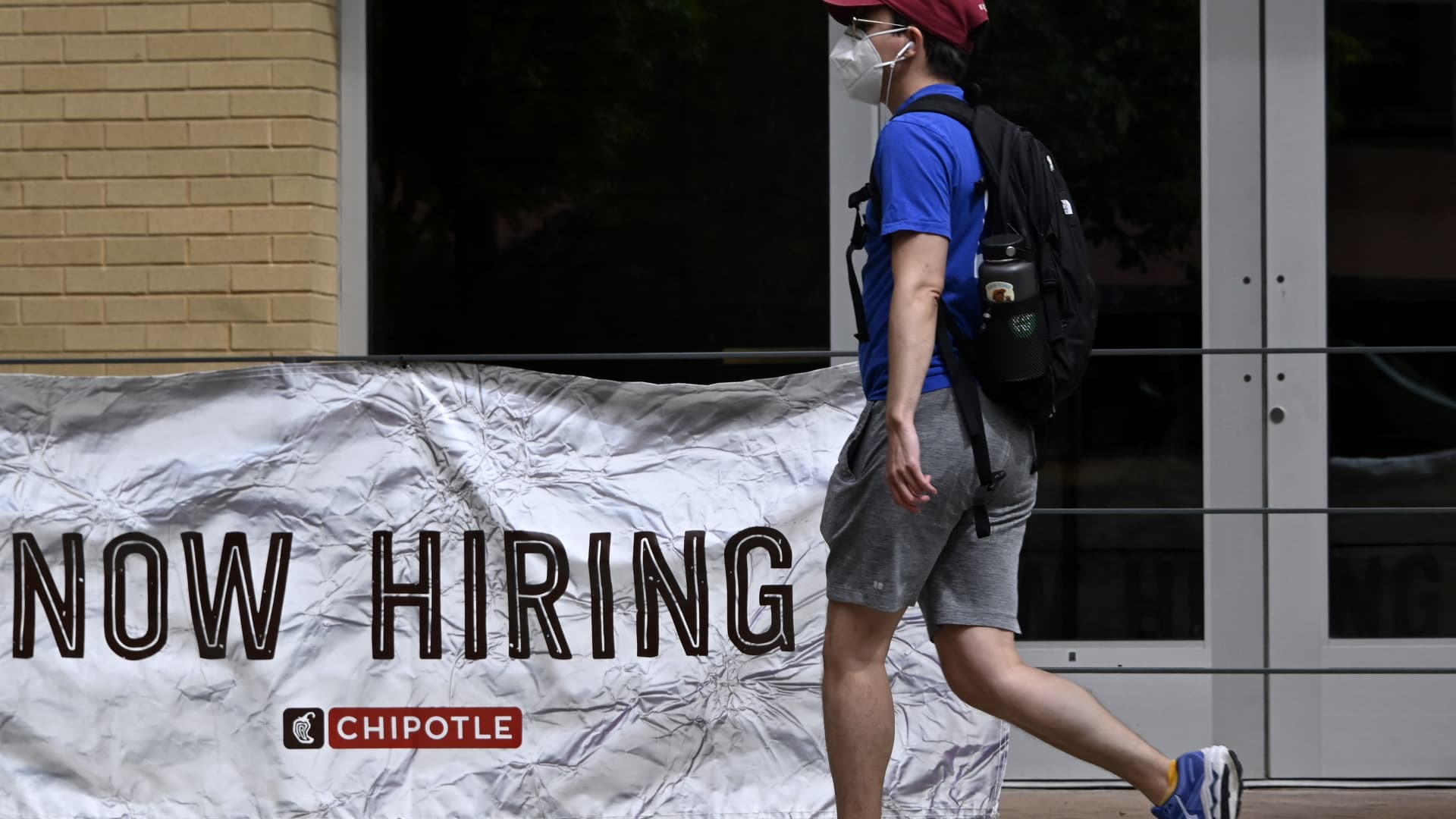The U.S. jobs market is still on fire, no matter how much effort policymakers put into cooling it off.
Despite a series of interest rate hikes aimed specifically at fixing an imbalance between company demand and the supply of workers, payrolls have been growing by hundreds of thousands of jobs a month, totaling nearly 1.6 million in the first five months of 2023 alone.
A Labor Department report Friday is expected to show that the trend continued through June. The Dow Jones consensus estimate is that payrolls rose by another 240,000, and the unemployment rate is projected to nudge lower to 3.6%.
Those waiting for the jobs picture to deteriorate, then, are going to have to continue to be patient.
“The demise of the labor market has been something that has seemed to be just around the corner for the last nine months or so. It keeps ticking in a way that we didn’t think is possible,” said Thomas Simon, an economist at Jefferies. “I think that we are going to get strong numbers [Friday]. But my longer-term stance is that this is basically the last gasp of strength.”
Lately, however, that has proven a familiar refrain.
Much like economists for the past year or so have been expecting the U.S. to tip into recession any day now, they’ve been looking for the labor market to lead the way. The payroll numbers have managed to beat consensus estimates for all but a few months since January 2022 as companies keep hiring and consumers keep spending.
But with the full impact of 10 rate hikes from the Federal Reserve starting to be felt, there’s growing feeling that a reconciliation is coming.
“Combined with the fact that labor force participation rates are essentially where they were for most of these cohorts before the pandemic, it just suggests to me that there aren’t really that many more people to hire,” Simon said.
An ‘overcooked’ jobs picture
Asked to describe the general state of the labor market, Simon called it “overcooked.”
“It’s remarkable how long it has withstood a really high degree of pressure. But I can’t see it going on indefinitely, unless something were to change radically with demographics,” he said.
Recent numbers, though, suggest the jobs picture again could defy expectations.
Payroll processing firm ADP on Thursday reported that private sector companies added a stunning 497,000 jobs in June, more than double the expectation. While ADP has had a spotty track record in aligning with the government’s official count, the tally at the very least suggests possible upside to Friday’s report.
Markets recoiled at the signs of labor strength, selling off Thursday afternoon as expectations rose that the Fed might have to get even more aggressive with rate hikes.
“It’s difficult for the market to digest the possibility that the Fed has more work to do,” said Quincy Krosby, chief global strategist at LPL Financial. “It’s become trite to say that good news is bad news. If you want to put it within the framework that the Fed wants to complete its mission by the end of the year, then this is actually good news for the market.”
Investors didn’t see it that, way, viewing the prospect of higher rates as heightening the chances that the much-predicted recession would become a reality.
Dallas Fed President Lorie Logan gave a speech Thursday morning, saying she expects more work to do on inflation and acknowledging that she was one of the central bankers who would have welcomed a rate hike at the June meeting. The Federal Open Market Committee ultimately voted to take a break from tightening, but officials indicated more rate increases are on the way.
What to look for in the report
The market will be parsing Friday’s report for additional points that will inform Fed policy.
One key will be wages. Average hourly earnings are projected to rise 0.3% on the month and 4.2% from a year ago. That would bring the annual pace down to its lowest since June 2021, a move in the right direction even if still above what the Fed considers consistent with its 2% inflation goal.
The average work week also will be a key metric, having been on a steady but gentle decline since early 2021 to its lowest level since April 2020.
Another point of interest will be any disparity between the survey of establishments, used to determine the headline payrolls number, and the survey of households, which determines the unemployment rate. In May, payrolls increased by 339,000, while the household survey showed a decline of 331,000, due almost completely to a big drop in self employment.
On Wall Street, most economists think the ADP report probably was inflated by seasonal factors, and see more moderate gains Friday.
Goldman Sachs, for instance, said it expects an above-consensus 250,000 gain for June, while Citigroup is looking for a much tamer 170,000, which it still sees as consistent with more rate hikes.
“A too-tight labor market that is inconsistent with 2% price inflation should keep Fed officials raising rates again in July and September,” Citigroup economist Veronica Clark said in a client note.
Another report Thursday indicated that the jobs market could be loosening at least a little. The Labor Department said job openings fell by nearly half a million in May, possibly indicating some relief ahead.
“It’s not great news, but it’s good news,” said Lightcast senior economist Rachel Sederberg. “This is the slow contraction in numbers we wanted – it’s comforting to see.”
